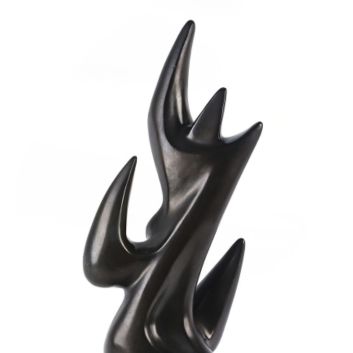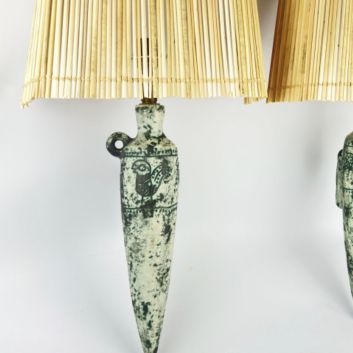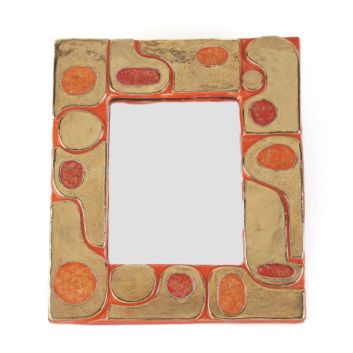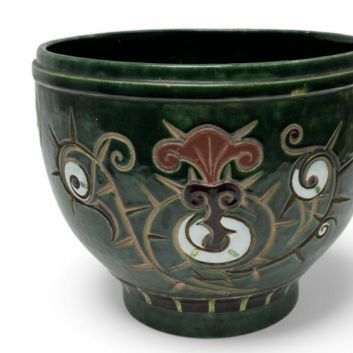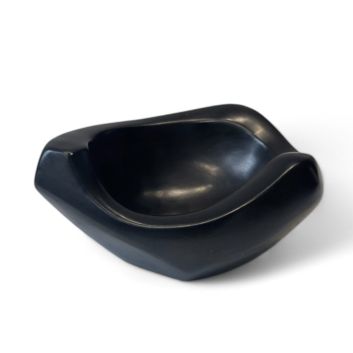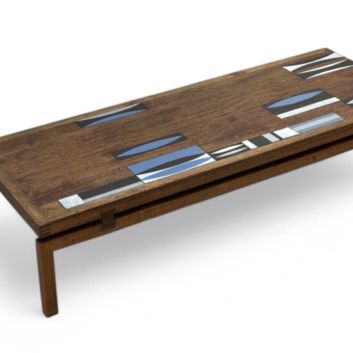Rating and value of Anne Dangar's drawings, paintings and ceramics
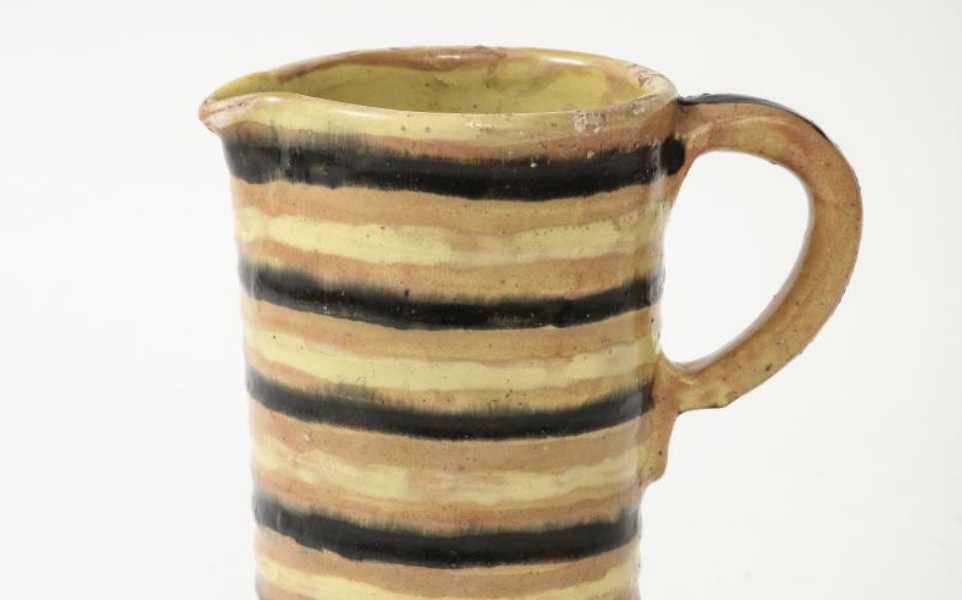
If you own an object by or after Anne Dangar, and would like to know its value, our state-approved experts and auctioneers can offer you their expert appraisal services.
Our specialists will carry out a free appraisal of your work, and provide you with a precise estimate of its current market value.
Then, if you want to sell your work, we'll point you in the right direction to get the best possible price for it.
Rating and value of Anne Dangar's works
Anne Dangar is a French artist well known to painting and ceramics enthusiasts. If you own one of her works, it may be worth more than you think. On the art market, Dangar's works can fetch very high prices under the auctioneer's hammer.
His ceramics are particularly prized by French and American buyers, and the price at which they sell on the art market ranges from €700 to €10,500, a fairly substantial range, but one that says a lot about the value that can be attributed to the artist's work.
In 2018, a pansu vase with two handles, sold for €10,500 while it was estimated at €2,500-3,500, more than four times the low estimate, suggesting the high potential of the artist's works on the auction market.
Order of value from a simple work to the most prestigious
Technique used | Results |
|---|---|
Drawing - watercolor | From €180 to €1,900 |
Ceramics | From €700 to €10,500 |
Response in less than 24h
Style and technique by Anne Dangar
Anne Dangar (1885 - 1951) was a major Australian artist of the Cubist movement, rediscovered today and active mainly in France.
She trained at the Julian Ashton Art School in Sydney, then at the Académie André Lhote in Paris, where she chose to adopt the principles of Cubism.
She is greatly influenced by Albert Gleizes, and participates in the Moly - Sabata artistic community that the artist founded, integrating his theories on the translation and rotation of forms.
His work stands out as a fusion of traditions, blending the geometric motifs of Cubism with elements of French, Celtic and Islamic folk art.
Anne Dangar discovered ceramics after painting, and produces glazed ceramics using traditional pottery techniques, notably wood-firing, to create utilitarian pieces adorned with cubist motifs.
On her ceramics, she uses the stencil drawing technique to apply geometric patterns to her ceramics, making it easy to reproduce complex designs. She works with local clays and glazes, integrating natural colors and rustic textures into her work.
Dangar thus develops a unique style sometimes referred to as "rustic cubism", combining the rigor of cubism with the warmth of traditional craftsmanship. She uses recurring motifs, incorporating spirals, crosses, entralacs and stylized representations of human and animal figures.
She creates utilitarian objects (dishes, pitchers, tureens) that transcend their everyday use through their aesthetic value.
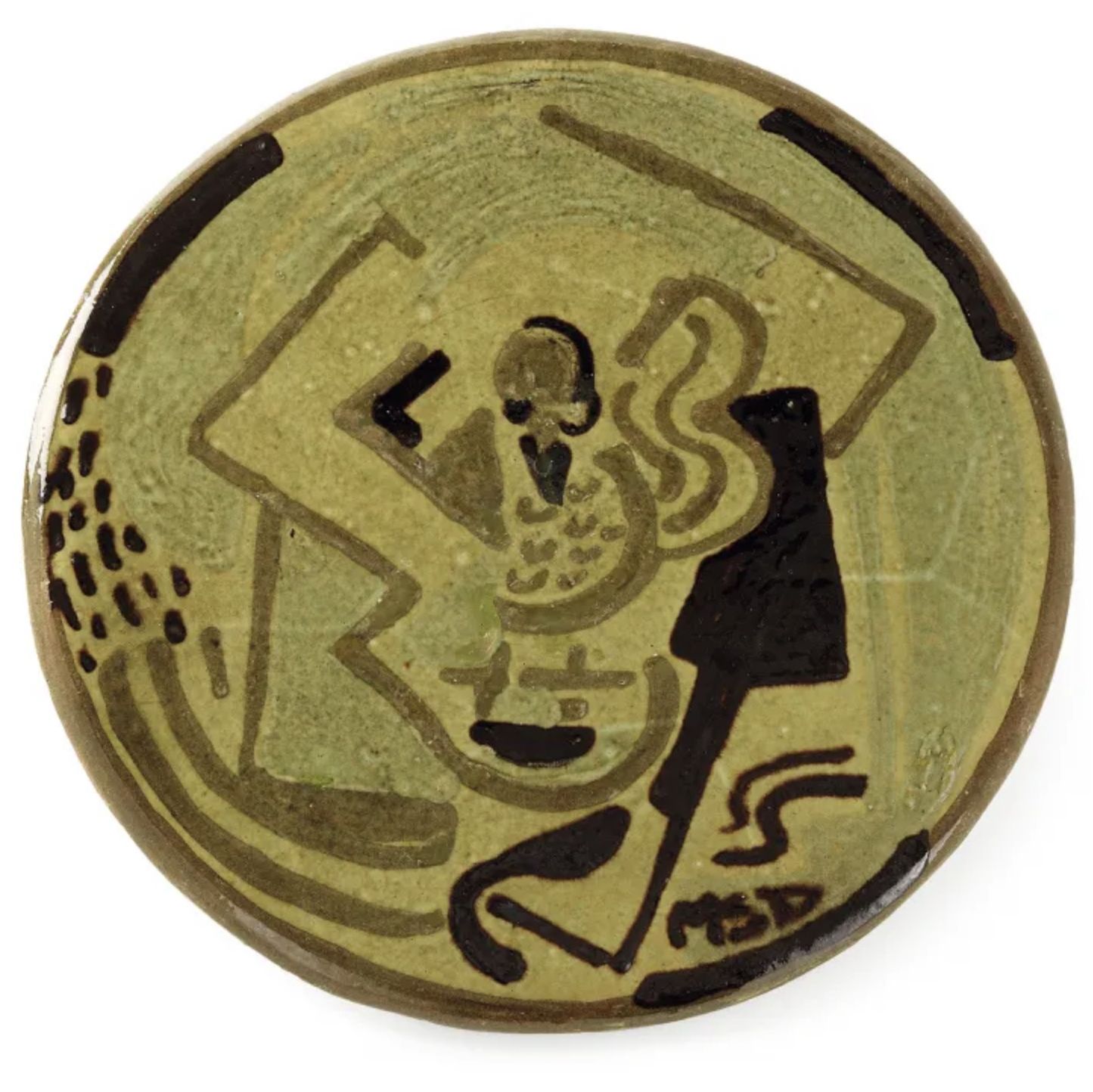
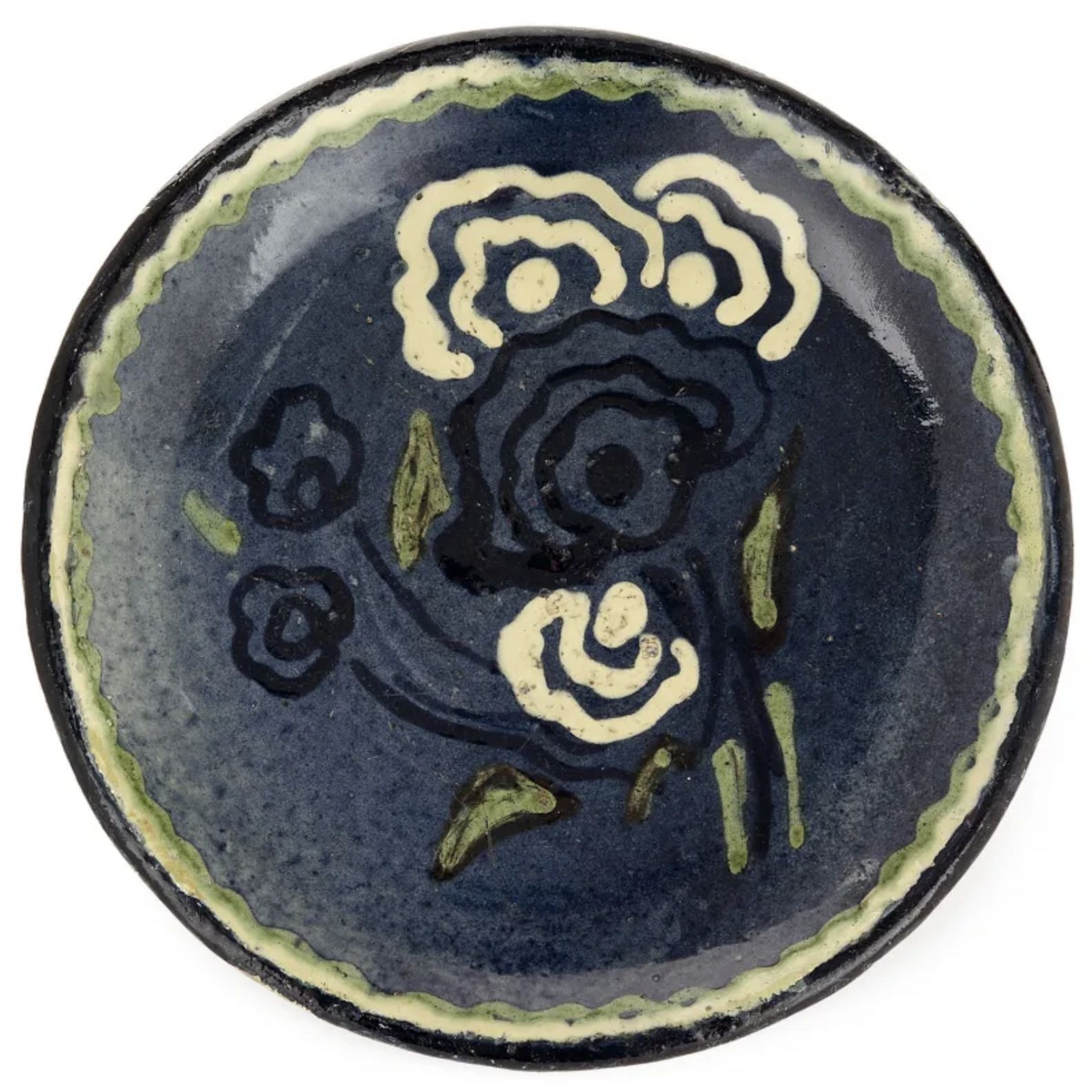
The life of Anne Dangar
Anne Dangar (1885 - 1951) was an Australian artist born in Kempsey, New South Wales (Australia). She was a central figure in the dialogue between Cubism and the applied arts.
A student at the Julian Ashton Art School in Sydney, she trained in fairly traditional, figurative techniques at one of Australia's leading art schools. She then went on to teach at the Syndey Church of England Girls Grammar School, and was already campaigning for an art form combining formal rigor and a sense of the everyday.
In 1926, she moved to France and trained at the André Lhote Academy, where she discovered structured and theorized Cubism. In 1930, she joined the Moly Sabata community, founded by Gleizes, where she experimented with an art of synthesis between tradition and modernity.
In the same years, she moved away from easel painting to devote herself to cubist ceramics, which she saw as a total art form.
She lives and works in the community of Moly-Sabata (Ardèche), and leads a simple life, close to the earth and materials. Her life is well documented through correspondence with her Australian friends (notably Grace Crowley and Dorrit Black), in which she exposes her artistic and spiritual ideas.
She was a teacher of modern art, and her influence on the Australian scene was also felt through her letters, which spread the ideas of cubism and applied art in Australia.
She died in 1951 in Ardèche. Long forgotten, she was rediscovered later in the 20th century as a pioneering figure of modern Australian art and a conduit of forms between Europe and Oceania.
His works are now held in several Australian museums, including the National Gallery of Australia, and his influence is now recognized in modern and decorative art circles.
Focus on Decorated Bowl, Anne Dangar, circa 1935 - 1940
Decorated Bowl is a glazed ceramic emblematic of the artist's "rustic cubist" style. It is a utilitarian object, designed for domestic use, but transcended by its plastic treatment.
Its function is affirmed insofar as the work is not decorative in the luxurious sense, but assumes its anchorage in gesture and material, in the spirit of the Arts & Crafts movement. Anne Dangar's geometric decor is stylized, integrating a network of simple shapes (triangles, spirals, broken lines) arranged according to a logic of rotation and dynamic rhythm.
The motifs recall the principles of translation and superposition specific to the cubist language developed and taught by Gleizes.
The surface retains a slightly grainy, handcrafted texture, and the stencilled enamel remains matte or slightly satin-finished in places. The colors used are fairly muted (brown, cream, olive green, ochre), in harmony with the raw material.
The lines are deliberately irregular, not striving for mechanical perfection, but expressing a living breath.
Through this work, Anne Dangar shares a desire to merge art and everyday life, with no hierarchy between the aesthetic and the functional.
We find both the modern principles of Cubism and echoes of popular vernacular pottery, particularly Mediterranean or Islamic.

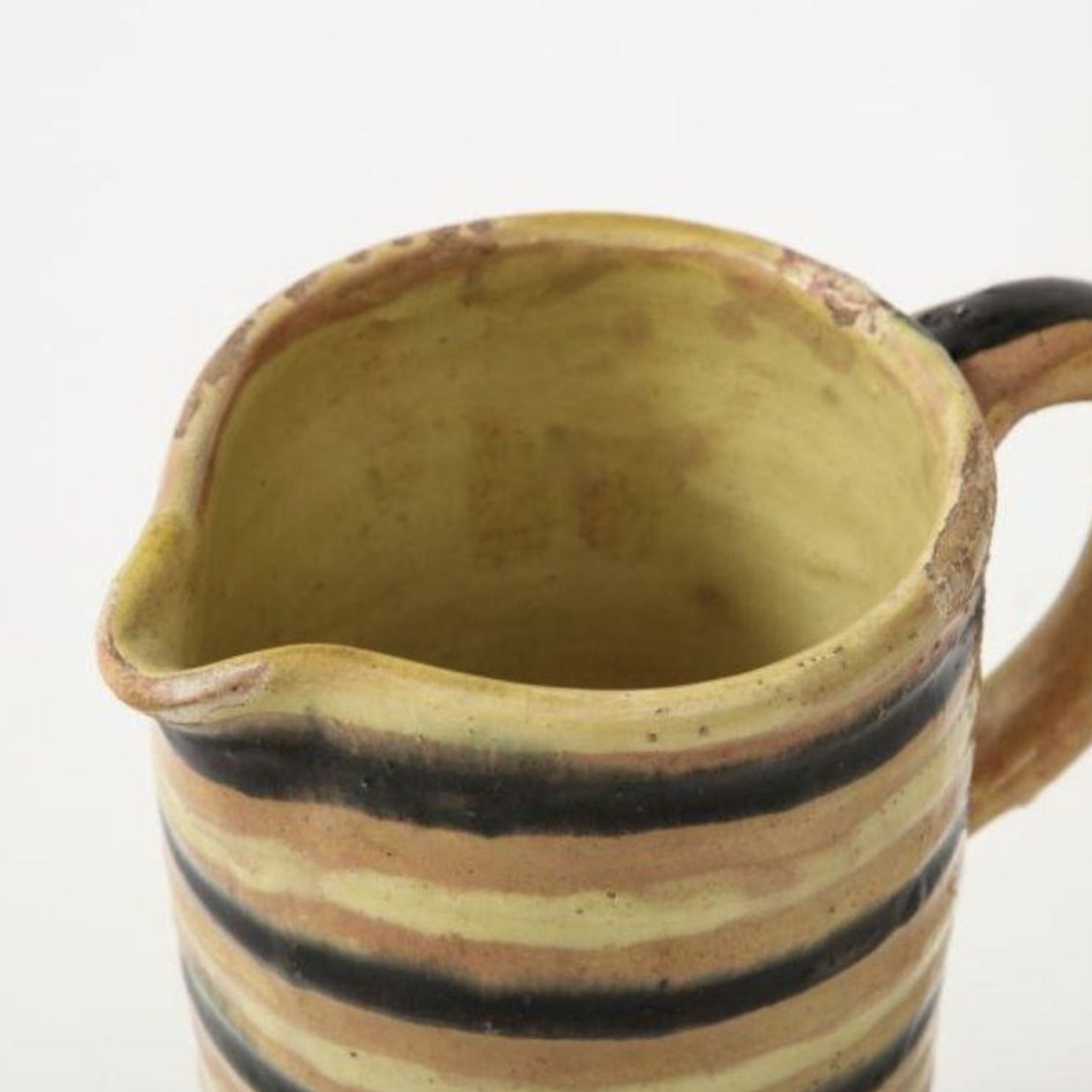
Anne Dangar's imprint on her period
Anne Dangar's work links modern art and craft. She is a pioneer of applied cubism, transposing cubist principles (decomposed forms, geometric rhythms, structured abstraction) to the decorative arts, particularly ceramics.
She broke with the Beaux-Arts / decorative arts hierarchy. At a time when figurative art was still dominant in Australia, she deliberately chose everyday objects as a medium for artistic innovation.
Anne Dangar is an active member of Moly-Sabata: in this community founded by Albert Gleizes, she helps forge an artistic utopia based on manual labor, spirituality and simplicity.
She was a figure of transmission between Europe and Australia, spreading modern ideas from afar through her correspondence with Australian artists, and acting as an intellectual mediator, transmitting the innovations of French Cubism to Australia.
By choosing to live in the Ardèche, a rural area of France far from the artistic capitals, she asserts a posture of independence that resonates with the spiritual avant-gardes of the 20th century.
She was also a precursor of the ceramics revival: her experimental, artisanal and geometric approach to ceramics anticipated trends rehabilitated in the 20th century (Studio Pottery, Bahaus, art brut).
Her rediscovery is late in coming, but essential. Although the artist remained marginal during her lifetime, her work is now recognized for its radical originality, its intercultural dimension and its ethical commitment to the act of creation.
Today, his work demands constant attention as it promises fine results at auction, like those by Claude Lalanne, Alice Colonieu or Dani Ruelland.
Recognizing Anne Dangar's signature
Not all objects produced by Anne Dangar are signed. What's more, copies may exist, which is why it's important to have your work appraised.
Knowing the value of a work
If you happen to own a painting by Anne Dangar or one based on this artist, please feel free to ask for a free estimate by filling in the form on our website.
A member of our team of experts and certified auctioneers will contact you promptly to provide you with an estimate of the market value of your work, as well as any relevant information about it.
If you're thinking of selling your work of art, our specialists will also be on hand to help you find alternatives for selling it at the best possible price, taking market trends into account.
Response in less than 24h
Related topics

Rating and value of First World War paintings
Paintings from the First World War are sought-after by collectors and are quite popular on the auction market.
Read more >

2024 quotation and value of paintings by Edga...
Edgar Brandt is a twentieth-century Art Deco and Art Nouveau metalworker who produced works that are highly prized and valued.
Read more >

Rating and value of drawings and photographs by Gustav Klucis
Gustav Klucis is a Russian artist who played an active role in Soviet propaganda. Today, his works are highly prized.
Read more >
Secure site, anonymity preserved
State-approved auctioneer and expert
Free, certified estimates
